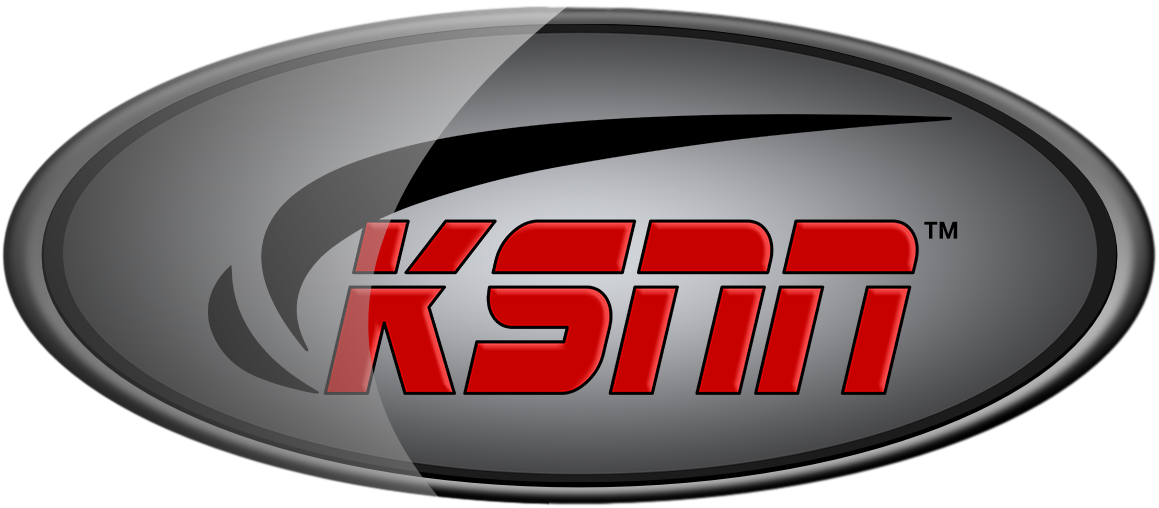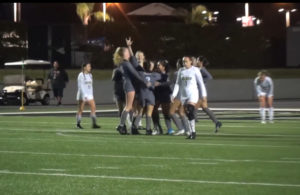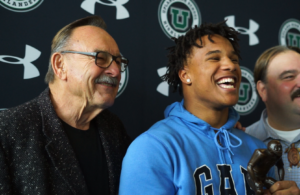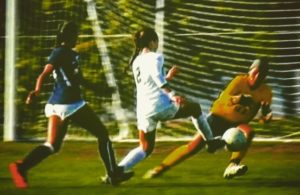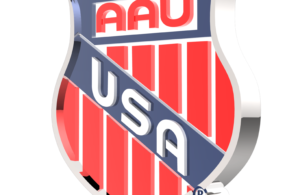- 2019/2020 Recap: Lady Scots Conquer First Round of CIF!
- 2019 Recap: Justin Flowe Wins the Dick Butkus Award
- Upland Lady Scots Have Their Revenge
- What is BBCOR?
- Tommy John, A Name To Be Feared
- The Game Plan
- Too Much Tackle?
- Is Cheer A Sport?
- Transgender Inclusion in Youth Sports
- Are You Counting Sheep Right?
Tommy John, A Name To Be Feared
- Updated: December 29, 2019
A seasoned pitcher holding his throwing elbow in obvious pain, continually shaking out his throwing arm, and motioning to the training staff for assistance while on the mound have all become worrisome sights in professional baseball. What do these scenarios most likely mean and why do they strike fear into a knowledgeable baseball fan?
Well, these instances most likely indicate that a pitcher has injured their elbow or more specifically, has damaged their ulnar collateral ligament in their throwing elbow. What comes next is often described as a painful and long process into fixing their elbow.
This process is called Tommy John surgery and this epidemic is present in more and more kids now too.
What is it?
Tommy John surgery has been more common in baseball over the last decade as more and more pitchers have been consistently hitting the mid-90s when throwing fastballs.
Historically, Tommy John surgery, named after old Los Angeles Dodgers pitcher Tommy John who was the first successful patient of this operation, restructures and repairs the ulnar collateral ligament in a patients throwing shoulder by replacing it with a tendon elsewhere in the patient’s body or even in a cadaver. Dr. Frank Jobe was the first to perform this surgery in 1974 on Tommy John, a career 288 game victor.
The original odds of John making a full recovery after the UCL surgical procedure where at one in 100 according to Jobe. John went on to have even more success post-surgery, as he earned 164 of his 288 victories after the procedure and retired at the age of 46.
As of now, the success rate of a full recovery after Tommy John surgery for a player hover around 87 to 92 percent. Usually, rehabilitation for a pitcher spans around to a year or even more if there are complications which are not uncommon; for a position player, the recovery time could be as low as six months.
Causes and Alternatives
What then causes this complex and yet common surgery among professional ballplayers?
The stress on a player’s arm thanks in part to the unnatural motion of throwing a baseball seems to be the main issue. The UCL in an arm is not built to withstand the motion of throwing a baseball and in fact can become stretched or torn through the repetitive motion of throwing a baseball.
Some players may be able to avoid Tommy John surgery if their UCLs are not completely torn but are instead a partial tear. In this instance, players may be able to keep throwing if the pain is not too great or may instead head for a different route than Tommy John in the form of platelet-rich plasma injections.
These PRP injections are becoming a common alternative for players who wish to avoid Tommy John surgery and the long recovery time. So far, PRP treatments in professional pitchers have not been too successful as many of these pitchers still have to go under the knife after these PRP treatments unsuccessfully repair damaged UCL tissue.
Common in Youths?
Today, Tommy John surgery is showing up in youths thanks in part to yearly play. Ballplayers ranging from the ages of 15-19 account for close to 60 percent of all Tommy John surgeries in a 2015 study in the American Journal of Sports Medicine.
The rigors of year-round play thanks in part to travel baseball and other competitive leagues are one of many factors in the rise of UCL injuries among youths.
With that in mind, youths on the bump are pushed even harder now too. Besides trying to overwhelm opponents with high end fastball velocity, breaking balls are not unheralded sights in these younger pitchers even though they are cautioned against by experts. The different angles and release points needed to execute these breaking pitches put even more stress on the throwing arm.
High pitch counts among these young pitchers also put unneeded stress on their arms and UCLs. While there are regulations into how many innings can be pitched by players in some leagues, many of these competitive or travel baseball leagues leave that up to the manager.
Even if a UCL in a youth’s arm is not damaged drastically, a promising youth may have Tommy John surgery anyway to essentially “repair” their ligament earlier rather than later in their baseball career. For them and their family, it’s a matter of the having the surgery now instead of having it later and interrupting their professional career.
All these factors have led to a rise in this procedure among youths and it doesn’t look like it is decreasing anytime soon.
Prevention
Though UCL tears are not 100 percent preventable in youths, there are ways to lower the risk of these injuries with some reasonable thinking.
One solution that could be taken into consideration is having substantial offseason time for a youth ballplayer.
Focusing on baseball year-round rather than playing another sport coupled with baseball will put even more stress on a player’s arm thanks in part to all the excess throwing. If a player is given rest from baseball, and their arm is rested from the unnatural motion of throwing a baseball, their risks of a UCL tear lowers drastically.
This includes rest from throwing a baseball completely, which allows the arm and UCL to recover from any stress from a previous season.
Another option to look at, specifically in youth pitchers, is the way they are being used by their manager. Are these pitchers being called upon to pitch every other game while being forced to execute to breaking pitches?
If that’s the case, the risks of UCL damage will increase with each appearance. No matter which player pitches on a team, there should be a plan in place to protect the athlete from serious arm injuries. That means there should be limits on how many pitches and innings they can throw while breaking balls should be prohibited from a pitchers arsenal.
There is no doubt that Tommy John surgery is a part of professional baseball, but in the case of youth ballplayers, this surgery is preventable with proper rest and regulations for youths on the mound.
Copyright © 2023 KSNN. All rights reserved.
